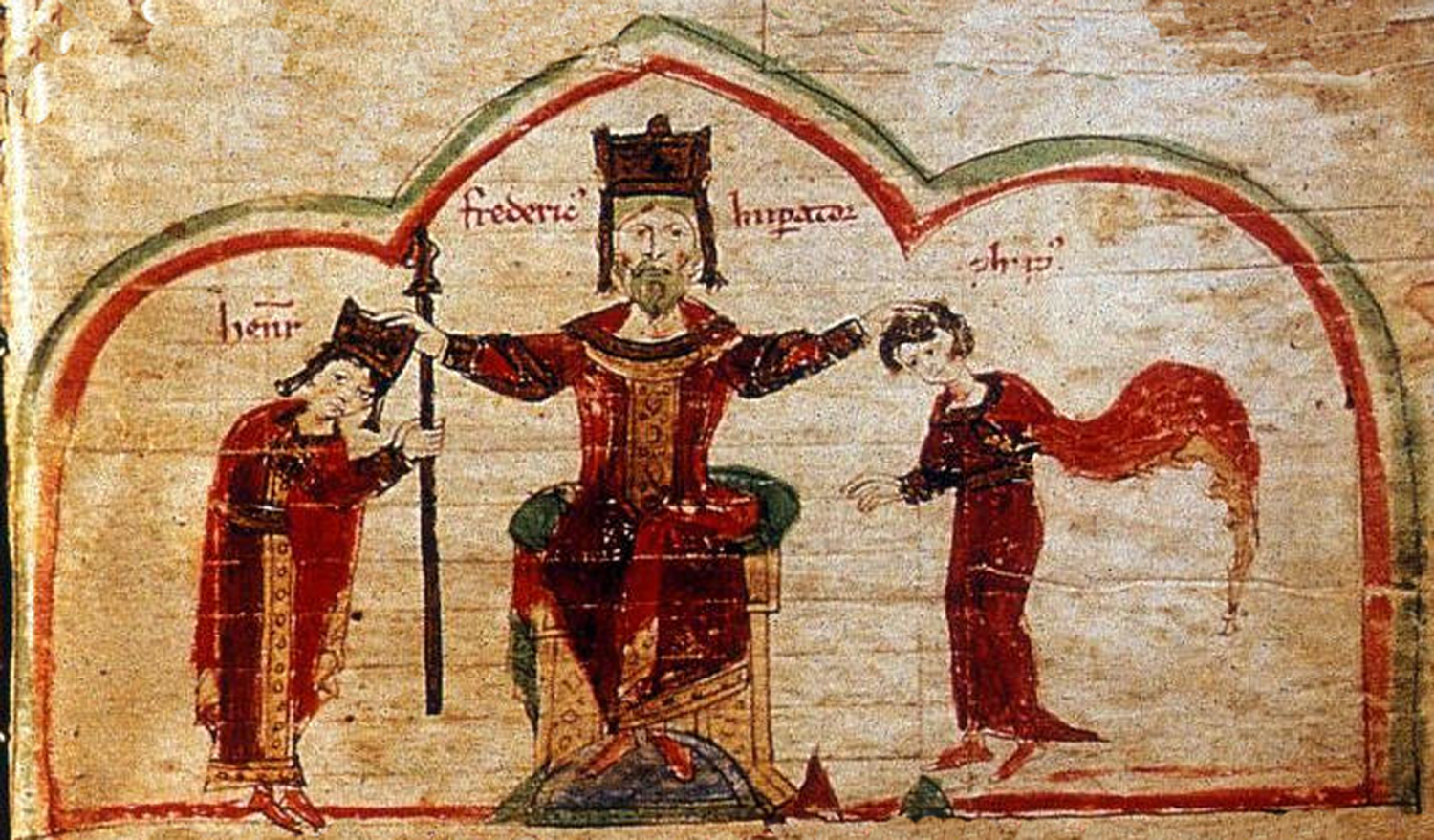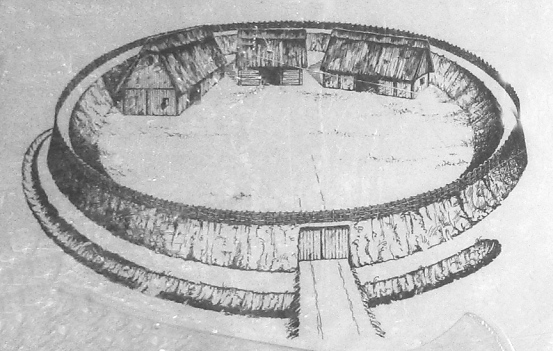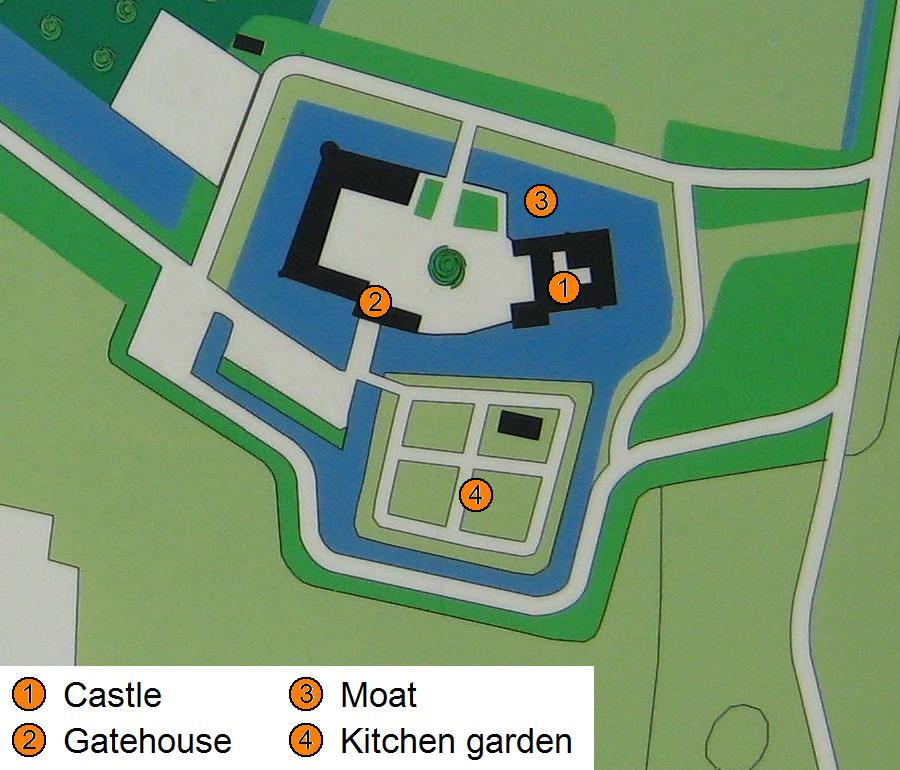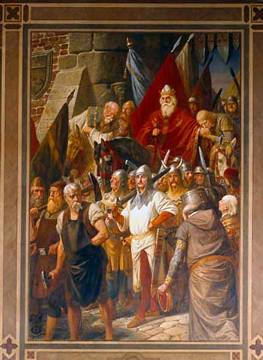|
Harlyburg
The Harliburg (also ''Harlyburg'' or ''Herlingsberg'') is a former imperial castle (''Reichsburg'') in the Harly Forest, in southeast Lower Saxony, Germany. Location The location of the former hillside castle () is about 1 km (as the crow flies) north-northeast of the town of Vienenburg (141 m above NN), in the county of Goslar and around 10 km (as the crow flies) northeast of the town of Goslar. The River Oker flows below the castle site to the south and east, around the southeastern end of the Harly Forest. A few hundred metres southwest of the Harliburg, in the Oker valley, lies Lake Vienenburg (''Vienenburger See''). Almost exactly 2 km west-northwest is the hill of Harlyberg (255.9 m above NN), the highest point of the Harly Forest. A section of the A 395 motorway runs past the Harly Forest, a few hundred metres east of the old Harliburg, where it is crossed by the B 241 federal road. History The Harliburg was built in 1203 by Kin ... [...More Info...] [...Related Items...] OR: [Wikipedia] [Google] [Baidu] |
Harlyberg
The Harlyberg, at {{Höhe, 255.9, DE-NN, link=true, is the highest hill of the Harly Forest The Harly Forest (german: Harly-Wald, also ''Harlywald'' or just ''Harly'') is a hill range up to above NN in the district of Goslar in southeastern Lower Saxony, Germany. Geography The low ridge is situated in the northern foothills of th ..., and rises in the district of Goslar in southeastern Lower Saxony, central Germany. Sometimes the term Harlyberg is used as a synonym for the entire Harly Forest (german: Harly-Wald), but this ignores the fact that there are other summits in that forested hill range. Geography The hill is located just under 2 kilometres northwest of Vienenburg. It may be reached on various forest tracks and hiking trails that run through the Harly Forest - for example on the ''Kammweg'' ("ridgeway"). Almost exactly 2 kilometres southeast is the site of an old castle, the Harlyburg. Harly Tower On the summit of the Harlyberg stands the Harly ... [...More Info...] [...Related Items...] OR: [Wikipedia] [Google] [Baidu] |
Vienenburg
Vienenburg is a borough of Goslar, capital of the Goslar (district), Goslar district, in Lower Saxony, Germany. The former independent municipality was incorporated in Goslar on 1 January 2014. Geography It is situated in the north of the Harz mountain range and east of the Harly Forest on the Oker River near its confluence with the Radau, about northeast of the Goslar town centre. Neighbouring municipalities are Bad Harzburg in the south and Schladen-Werla in the north. The former township consisted of Vienenburg proper and the surrounding villages Immenrode, Lengde, Weddingen, Lochtum and Wiedelah, all incorporated in 1972. Situated in a mainly agricultural area, it is known for the Harzer cheese, although the production was transferred to Saxony in 2004. History The Harlyberg hill (256m/840 ft) north of the town was the site of a castle built in 1203 by the House of Welf, Welf king Otto IV, Holy Roman Emperor, Otto IV of Germany to threaten the trade route to History of G ... [...More Info...] [...Related Items...] OR: [Wikipedia] [Google] [Baidu] |
Philip Of Swabia
Philip of Swabia (February/March 1177 – 21 June 1208) was a member of the House of Hohenstaufen and King of Germany from 1198 until his assassination. The death of his older brother Emperor Henry VI in 1197 meant that the Hohenstaufen rule (which reached as far as the Kingdom of Sicily) collapsed in imperial Italy and created a power vacuum to the north of the Alps. Reservations about the kingship of Henry VI's underage son, Frederick, led to two royal elections in 1198, which resulted in the German throne dispute: the two elected kings Philip of Swabia and the Welf Otto of Brunswick, claimed the throne for themselves. Both opponents tried in the following years through European and papal support, with the help of money and gifts, through demonstrative public appearances and rituals, to decide the conflict for oneself by raising ranks or by military and diplomatic measures. Philip was able to increasingly assert his kingship against Otto in the north part of the Alps. However, ... [...More Info...] [...Related Items...] OR: [Wikipedia] [Google] [Baidu] |
Heinrich Rosla
Heinrich may refer to: People * Heinrich (given name), a given name (including a list of people with the name) * Heinrich (surname), a surname (including a list of people with the name) *Hetty (given name), a given name (including a list of people with the name) Places * Heinrich (crater), a lunar crater * Heinrich-Hertz-Turm, a telecommunication tower and landmark of Hamburg, Germany Other uses * Heinrich event, a climatic event during the last ice age * Heinrich (card game), a north German card game * Heinrich (farmer), participant in the German TV show a ''Farmer Wants a Wife'' * Heinrich Greif Prize, an award of the former East German government * Heinrich Heine Prize, the name of two different awards * Heinrich Mann Prize, a literary award given by the Berlin Academy of Art * Heinrich Tessenow Medal, an architecture prize established in 1963 * Heinrich Wieland Prize, an annual award in the fields of chemistry, biochemistry and physiology * Heinrich, known as Haida in Ja ... [...More Info...] [...Related Items...] OR: [Wikipedia] [Google] [Baidu] |
Moat
A moat is a deep, broad ditch, either dry or filled with water, that is dug and surrounds a castle, fortification, building or town, historically to provide it with a preliminary line of defence. In some places moats evolved into more extensive water defences, including natural or artificial lakes, dams and sluices. In older fortifications, such as hillforts, they are usually referred to simply as ditches, although the function is similar. In later periods, moats or water defences may be largely ornamental. They could also act as a sewer. Historical use Ancient Some of the earliest evidence of moats has been uncovered around ancient Egyptian castles. One example is at Buhen, a castle excavated in Nubia. Other evidence of ancient moats is found in the ruins of Babylon, and in reliefs from ancient Egypt, Assyria, and other cultures in the region. Evidence of early moats around settlements has been discovered in many archaeological sites throughout Southeast Asia, including ... [...More Info...] [...Related Items...] OR: [Wikipedia] [Google] [Baidu] |
Circular Ramparts
A circular rampart (German: ''Ringwall'') is an embankment built in the shape of a circle that was used as part of the defences for a military fortification, hill fort or refuge, or was built for religious purposes or as a place of gathering. The period during which these structures were built ranged from the Neolithic to the Middle Ages. Construction The key feature of a circular Rampart (fortification), rampart is that the Earthworks (engineering)#Military use, embankment formed the primary element of the defensive fortification. It can be constructed in various ways: as a simple earth embankment, as a wood and earth structure, or as a wall. Circular ramparts usually have a moat or Ditch (fortification), ditch in front of them; the embankment can be enhanced with a wooden palisade. Often several concentric rings were built, which produced a more effective defensive position against attackers. The interior of such sites often shows evidence of buildings such as halls, barns, and ... [...More Info...] [...Related Items...] OR: [Wikipedia] [Google] [Baidu] |
Water Castle
A water castle is a castle whose site is largely defended by water. It can be entirely surrounded by water-filled moats (moated castle) or natural waterbodies such as island castles in a river or offshore. The term comes from European castle studies, mainly German ''Burgenkunde'', but is sometimes used in English-language popular science books and websites, and is mentioned in other more academic works. When stately homes were built in such a location, or a Wasserburg was later rebuilt as a residential manor, the German term becomes Wasserschloss, lit. "water palace/manor". Description Forde-Johnston describes such a site as "a castle in which water plays a prominent part in the defences." Apart from hindering attackers, an abundant supply of water was also an advantage during a siege. Topographically, such structures are a type of lowland castle, low-lying castle. Such a castle usually had only one entrance, which was via a drawbridge and that could be raised for protection in ... [...More Info...] [...Related Items...] OR: [Wikipedia] [Google] [Baidu] |
Slighting
Slighting is the deliberate damage of high-status buildings to reduce their value as military, administrative or social structures. This destruction of property sometimes extended to the contents of buildings and the surrounding landscape. It is a phenomenon with complex motivations and was often used as a tool of control. Slighting spanned cultures and periods, with especially well-known examples from the English Civil War in the 17th century. Meaning and use Slighting is the act of deliberately damaging a high-status building, especially a castle or fortification, which could include its contents and the surrounding area. The first recorded use of the word 'slighting' to mean a form of destruction was in 1613. Castles are complex structures combining military, social, and administrative uses, and the decision to slight them took these various roles into account. The purpose of slighting was to reduce the value of the building, whether military, social, or administrative. Des ... [...More Info...] [...Related Items...] OR: [Wikipedia] [Google] [Baidu] |
Highway Robbery
A highwayman was a robber who stole from travellers. This type of thief usually travelled and robbed by horse as compared to a footpad who travelled and robbed on foot; mounted highwaymen were widely considered to be socially superior to footpads. Such criminals operated until the mid or late 19th century. Highwaywomen, such as Katherine Ferrers, were said to also exist, often dressing as men, especially in fiction. The first attestation of the word ''highwayman'' is from 1617. Euphemisms such as "knights of the road" and "gentlemen of the road" were sometimes used by people interested in romanticizing (with a Robin Hood–esque slant) what was often an especially violent form of stealing. In the 19th-century American West, highwaymen were sometimes known as ''road agents''. In Australia, they were known as bushrangers. Robbing The great age of highwaymen was the period from the Restoration in 1660 to the death of Queen Anne in 1714. Some of them are known to have been disb ... [...More Info...] [...Related Items...] OR: [Wikipedia] [Google] [Baidu] |
Landfriede
Under the law of the Holy Roman Empire, a ''Landfrieden'' or ''Landfriede'' (Latin: ''constitutio pacis'', ''pax instituta'' or ''pax jurata'', variously translated as "land peace", or "public peace") was a contractual waiver of the use of legitimate force, by rulers of specified territories, to assert their own legal claims. This especially affected the right of feuding. Scope ''Landfrieden'' agreements formed the political basis for pursuing claims without resorting to the private use of violence. They also often regulated the jurisdiction and thus allowed the settlement of disputes through judgements based on a common set of rules. Offences or violations of the public peace were liable to severe punishment. For example, objects or buildings (such as churches, homes, mills, agricultural implements, bridges, and especially imperial roads) and people (priests, pilgrims, merchants, women, even farmers, hunters and fishermen in carrying out their work) could be placed under pro ... [...More Info...] [...Related Items...] OR: [Wikipedia] [Google] [Baidu] |







